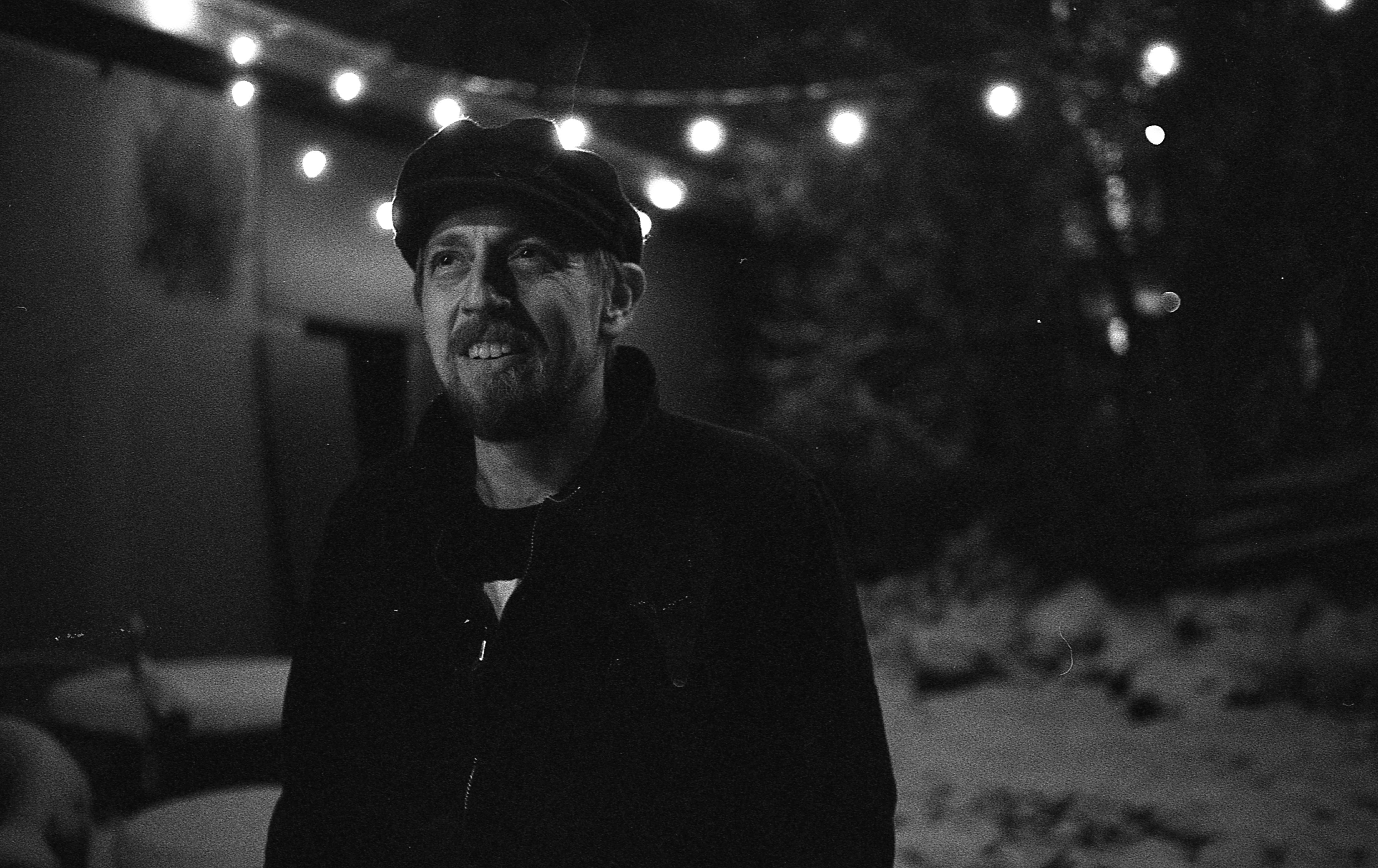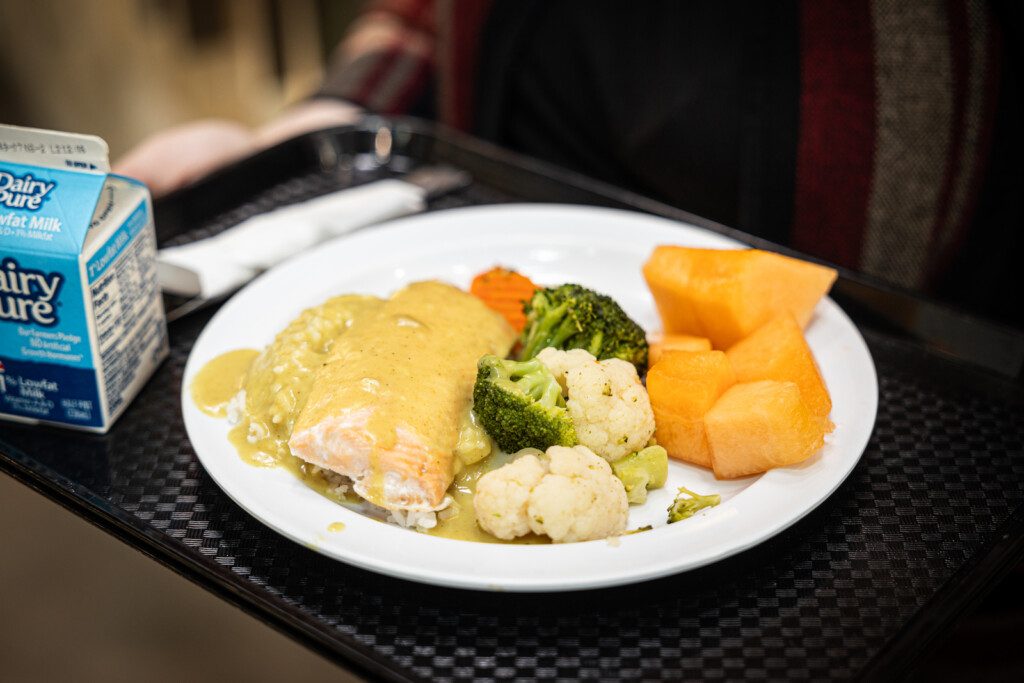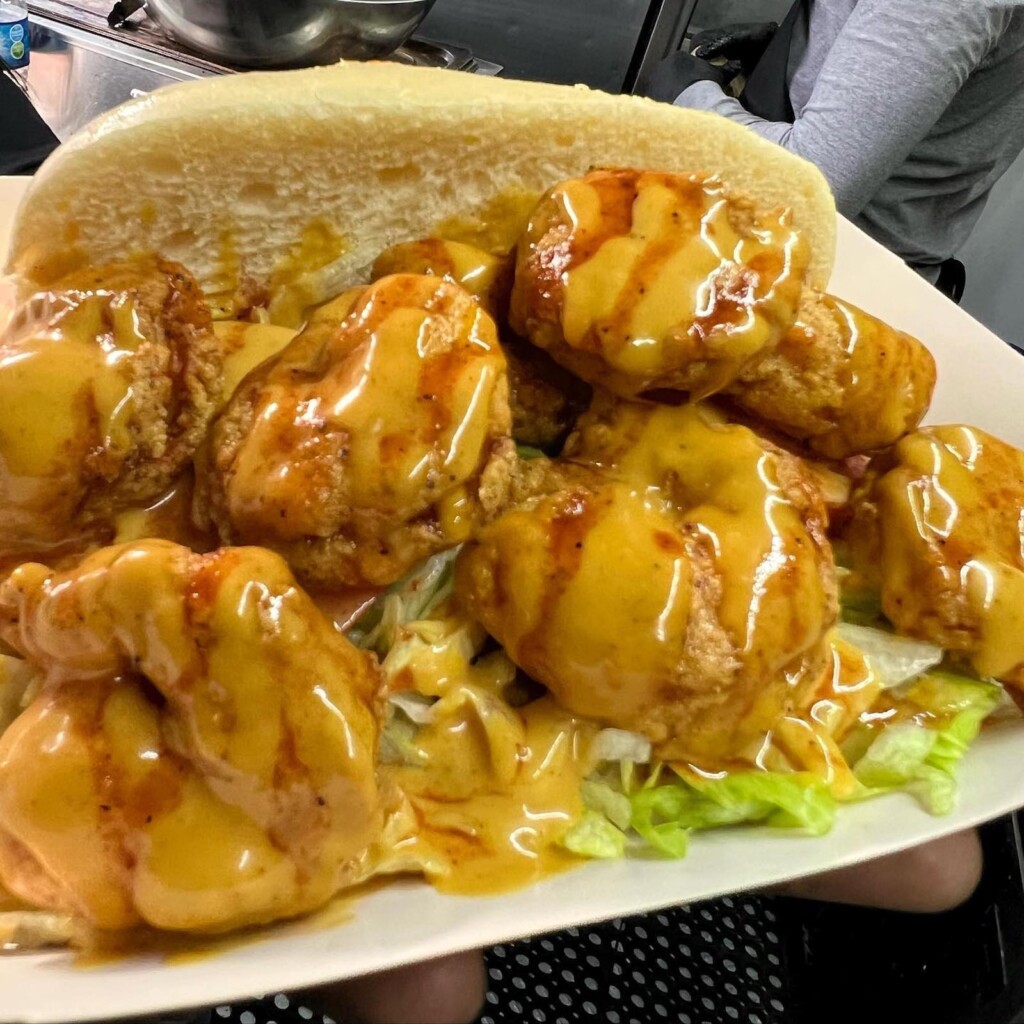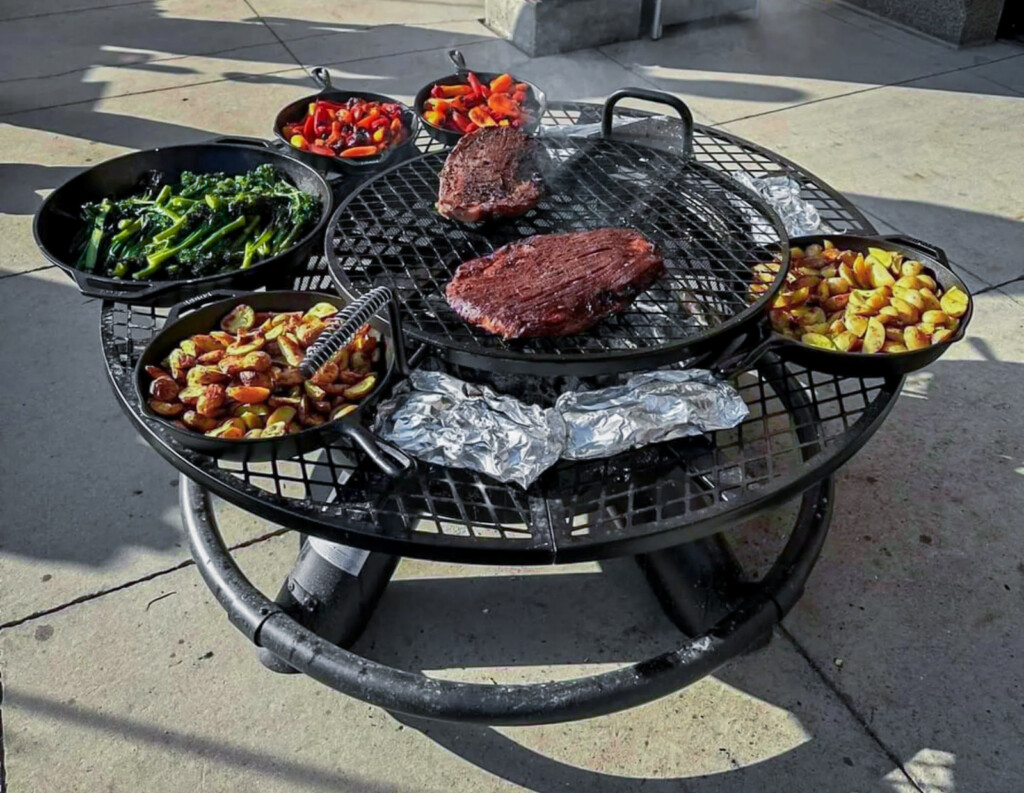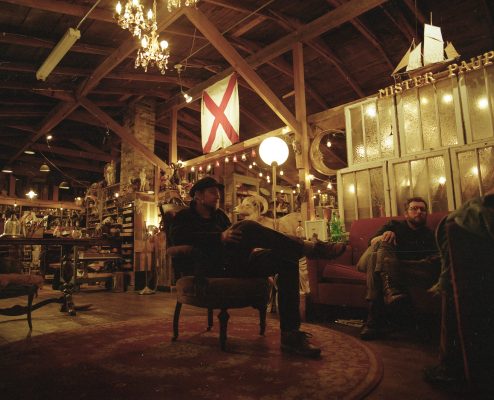
A gang of artists, armed with heart and gall and tools from Harbor Freight, threatens to diversify Provo, Utah, with fine art, coffee, haircuts, tattoos, and community events. They’ve taken over the tired midcentury building located at 156 West 500 South and have turned it into a parlor of sorts, a source of golden light and galas and monthly drawing sessions with nude models. They call the place The Boxcar Studios.
Jake Buntjer—father, photographer, found-object sculptor, and now community organizer—founded Boxcar twelve months ago when he acquired the building on a bargain lease. Inspired by Corey Fox, owner of Velour and godfather to Utah Valley’s music scene, Buntjer set out to create a marketplace and community for fine artists and their patrons. “I knew in my gut,” says Buntjer, “if I could acquire this space, if I could create the opportunity for myself and then share it with other people, that we could hook dreams.”
Boxcar has since endured on Buntjer’s vision, gumption from enlisting artists, and gristle from volunteers. On any given day, Millennials and Gen-Xers can be found there rewiring electrical circuitry, plumbing new pipes, nailing up reclaimed boards, or painting walls. On weekends you’ll find art shows, musical performances, and parties. This February you can attend a private carnival for $50, which includes live music by Timmy the Teeth, premium cocktails, fire dancers, contortionists, stilt walkers, and whatever shenanigans might ensue in such an environment. In recent months, Boxcar has hosted Thanksgiving, Christmas, and New Year’s gatherings, providing a free space for friends and community members to gather for drink and food.
Boxcar is home to seven artist studios and a trio of connected storefront shops—Revolución Barbershop & Co., Man in the Moon Mercantile, and Rugged Grounds, a coffeehouse. The Mercantile serves as main entry, where guests are apt to meet Jeremiah “Pete” Hansen behind its glass counters.
Pete is lean and blond. A reassuring Paul Newman-like smile springs easily and frequently across his face. His background is in food services and construction and his first love is culinary arts, but the vagaries of life have sent him searching. He got to know the Boxcar while patching its roof one day, working odd jobs. It didn’t take long for the unheated and leaky building to seduce Pete, like an empty frontier. He soon began regularly working around the Boxcar, volunteering his time. Now he mans the main entry five days a week.
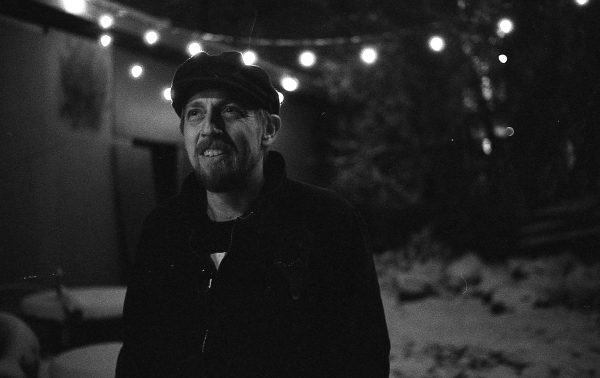
What inspires a man to abandon a recurring paycheck for some impossible opportunity, to take a chance on art and community?
“The short story?” says Pete, “I grew up in a big-ass family, the seventh of nine kids. Always shared a room. Married young, always shared a house. Got divorced, didn’t know what the f***. Got remarried, tried to make that work. Didn’t work out. I don’t know how to be alone. I don’t know who I am. I don’t know what ‘me’ is. So why not?”
Besides, he adds, “I can reinvent myself. I can be whoever I want. And reality is what?”
Reality does seem to twist and morph inside the Boxcar. The Mercantile, for example, is bedecked with green soda bottles, burlap bags, typewriters, trilobites, brass belt buckles, wired spectacles, fraying leather jackets, false teeth, and black-and-white postcards. A gray housecat named Toby toes about, purrs. There’s a velour chaise lounge, a yellow Tonka truck, a stuffed boar’s head, one sheep skull covered in turquoise, and a filigreed sofa in the colors of sea green and aqua. In the evenings, bistro lighting colors the timbered room bronze. In the mornings, the large shop window is platinum, a portal back to a world of concrete and cubicles, where the pathway is known. But inside the Boxcar, possibility wafts around like an invisible river, and there’s the sense that, if lucky, you can hitch and ride the flow.
Next door, inside Revolución Barbershop, California natives E’Sau and Lizzy Negrete cut hair. Actually, Lizzy works the counter, smiling at the conversations that ricochet around the shop. E’Sau wields the scissors, clipping hair with jabs and hooks, while she dances around each customer. She talks in loud, quick gestures, her tattooed arms unfurling in all directions. Old liquor bottles fitted with spray nozzles line a shelf below a mirror. E’Sau’s been cutting for 24 years.
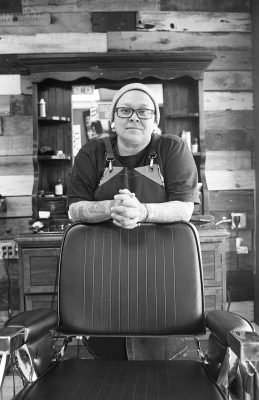
“I’m the oldest of fourteen kids,” she says, “and I have ten brothers. My mom bought me a pair of clippers from K-Mart one day, when I was 13. I’ve been cutting hair since.”
Being the eldest, E’Sau spent most of her life taking care of younger siblings. “I never got to know who I really am until I moved away,” she says.
And until Revolución, she’s always barbered from home. Having an actual shop, for the Negretes, is a dream come true.
To the other side of the Mercantile lies Rugged Grounds. Partners Skyler Saenz and Sadie Crowley have renovated the old tax office entirely with reclaimed materials, from the paneled walls to the stainless counters to the sawhorse tables. They plan to sell traditional espresso and coffee, but will also offer kombucha, pour-overs, and cold-brew. The two blow kisses to each other from across the room, hug when they collide in the kitchen. They are young and attractive, and their endearments give off an intoxicating air of youthful promise, but without naivety. What they have seems solid, rugged, adding charm to the already quaint quarters.
“I’ve thought about doing something like this forever, since I was pre-teen,” says Sadie. “And Skylar thought about it forever, too.”
Skyler confirms this. “Big dream on a whim,” he says.
When Boxcar hosts a gathering, the storefront shops come alive. The Negrete’s Latino community descends on the barbershop en force, showing this gringo what familial relationships should look like. Ceviche and tequila abound. The scent of coffee drifts between the chatter of Provo’s curious, who flock to the Boxcar and gather inside the Mercantile and Rugged Grounds.
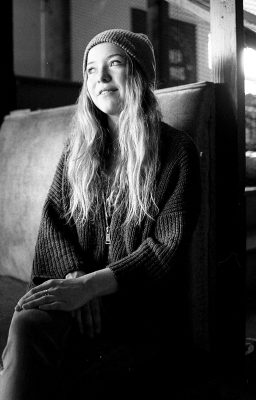
After coffee and conversation, guests mingle their way up a flight of creaky stairs, northward through Buntjer’s studio, and back down a set of creaky stairs into the industrial tail of the Boxcar. Depending on the evening, a band plays or art hangs from the rafters. The artists in residence open their doors and answer questions about their work.
Painter Chase Henson rents a studio. A while back he was studying aviation mechanics, but an internship opened his eyes. Chase realized mechanics wasn’t for him, so he altered course and earned a degree in art. About this same time he abandoned the religion of his upbringing, became fascinated with religion in general, and in particular Hinduism. He now metamorphoses its mythologies and gods in his paintings. Of the Boxcar he says, “This place saved my artistic life.” Chase recently lost a tattooing apprenticeship and was ready to forsake the starving artist’s way. Boxcar, with its burgeoning community, represents a second chance.
Artists desperately need second chances in Provo. With a pious religious base and prevailing conservative worldview, the third largest city in Utah feels more like the set of The Donna Reed Show than an actual metropolis. Culture is something primarily emitted via Mormondom. Artists who succeed in Provo tend to paint portraits of Jesus Christ or depict dead Mormon prophets, Mormon temples, and scenes from the Book of Mormon. Photographers succeed by snapping happy and glistening pics of Utah’s scenery. So making Hindu-inspired paintings that connote mysticism (Chase Henson) or honest photos of naked men (Trevor Christensen) or found art sculptures that hint of death and magic (Jake Buntjer) or photos that color youth and playfulness with loneliness and nostalgia (Lyndi Bone) or mixed media that decry industrialism and corporatism (Kelly Larsen) is a labor of love and uphill battle. But the Boxcar has enabled this motley crew to concentrate their artistic efforts, and they are puncturing cultural barriers.
The crew is more interested in building than in tearing down, however. Buntjer’s vision of Boxcar is inclusive. Despite being an ex-Mormon and divorcee—marks that Mormondom customarily frowns upon—Buntjer doesn’t want to alienate members of the dominant culture. He in fact sees Provo’s homogeneity as artistic promise—a clean page on which to score a new song. He wants to give back to the community that shaped him by sprouting a culture that it can one day appreciate. And if that day doesn’t come, well, he and the other misfits will have each other and whatever they make of themselves through art. “I just want the community,” Buntjer says. “I want church.”
The community is coming together, and maybe the “church” is too. Boxcar is akin to a clubhouse for adults, a place of play and spiritual replenishing. Sometimes in the late hours, when the night is taut and black and all that remains of the crowds is echoing whispers, three or four or six overgrown youth will circle within the gold light and share wine or whiskey or whatever alcohol can be found hiding in a desk drawer. Those gathered begin to skip and leapfrog their words, so that they end up communicating more through vibes and frequencies than actual language. Psychologists call this “flow,” except they’ve yet to study it in conversational contexts. To a stranger or latecomer, it would sound like gibberish. In truth, it’s a deeper form of communication than everyday chatter, something that occurs at the level of the soul, and often regards matters of the same—what it is or isn’t, how to attain it or express or channel it. The details of these revelries are often forgotten by morning, but lingering impressions remain—footprints on each being’s nucleus, pictographs of the night tattooed onto vital organs. Of these clubhouse sessions, Pete says, “They happen when they need to.” You can’t buy tickets. No money required.
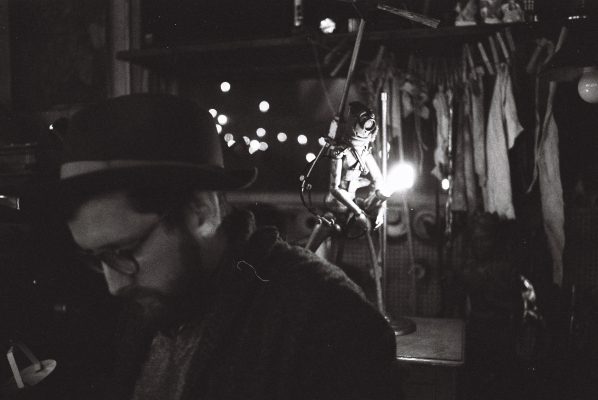
These more serious and subdued meetings occur in Buntjer’s studio. His radiates the greatest amount of gold light and magic. Whereas the other studios feel like studios, splotched with paint, flung with framed illustrations and photos, Buntjer’s studio is part shop of horrors, part American Pickers collective. There are felt hats, fur coats, and twenty-one pairs of rusty pliers. There are hammers, saws, tapes, an old tequila bottle filled with purple goop. Block letters on a beam read: MISTER PAUPER. There are springs, wires, cloths, razor blades, dressmaking torsos, and over twenty-five doll heads, many with their eyes plucked out. A horse bust sits blindfolded in one corner. There are canvas bags, model ships, birdhouses, dusty jewelry boxes, and a wall of brass curiosities. Buntjer repurposes the refuse when he sculpts, which involves grinding, cutting, stitching, tying, wiring, hammering, gluing, and dreaming. A stuffed desert bighorn sheep stands in the center of the room. Above it drapes a large white flag bearing a red X, as if to suggest: This is the place.
Between overseeing Boxcar’s operations, sculpting, shooting photos, pitching art shows, and directing art for a new theatre in Provo, Buntjer works sometimes eighteen hours a day. He is in the Boxcar’s tail, the storefront, and out back unloading his Jeep all at once, planning, directing, organizing. Sculpting. Sometimes following a Boxcar event, which represents the climax of a month’s work, he retires to his studio on a burgundy sectional next to the desert bighorn for a clubhouse session. For church. But even as he unwinds, a vision visibly turns in his head, one he has expressed a hundred times in a hundred different ways, but that always resounds the same:
“I knew in my gut if I could acquire this space, if I could create the opportunity for myself and then share it with other people, that we could hook dreams. And if I hooked a dream with somebody and they hooked with me, then we could hook more dreams together and create an ecosystem that benefitted everybody. Then maybe everybody could be a little more creative, a little more real, a little more daring, a little more risky, because they were connected to other people doing the same thing. It’s a family.”

